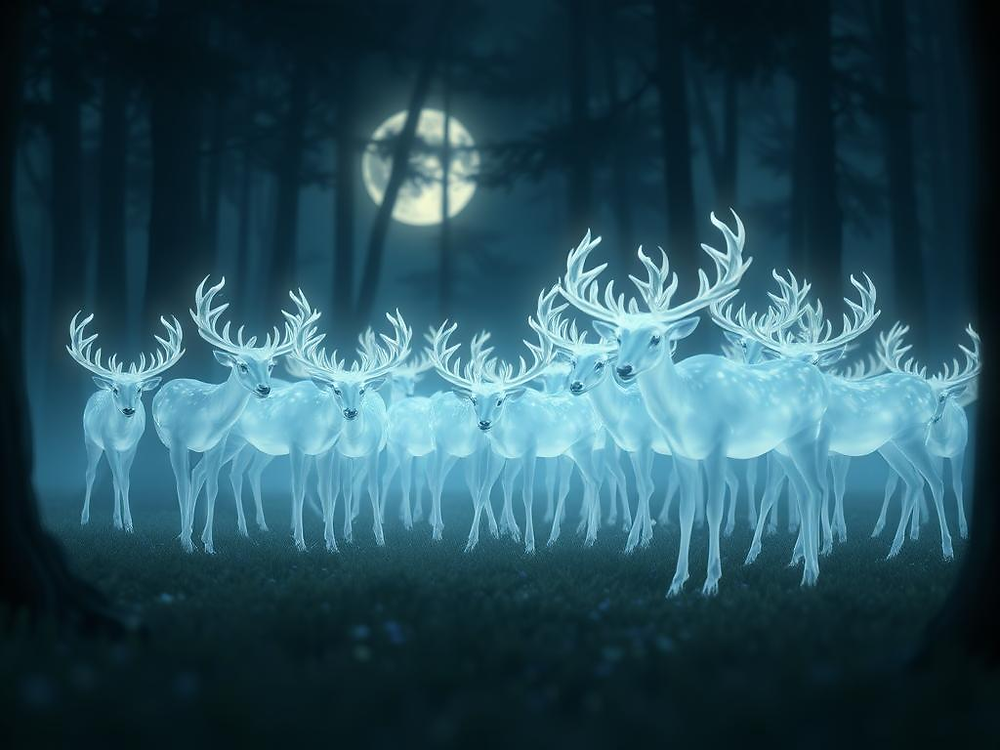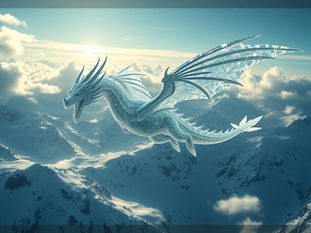
Essential Tips for Better Midjourney Videos: What's New?
Jul 28
6 min read
0
78
0

Midjourney offers powerful tools for creating stunning images, and its video features, known as Midjourney Motion, let you bring those images to life. Recent updates have made video creation even more flexible and creative. This guide shares tips and new features to help you make your AI videos stand out.
New Ways to Animate Your Images
[P]Midjourney lets you turn your images into videos in several ways. You can use the "Animate Image" option for automatic videos, or "Animate Manually" to add specific text.[P]
Create Looping Videos
A big update is the ability to create seamless looping videos. This feature makes your videos flow smoothly from end to beginning. You can choose "Loop Low Motion" or "Loop High Motion" directly from your image options. If you are animating manually, just add "loop" to your prompt. You can also type `--loop` as a parameter.
Use End Frames for Transitions
End frames allow you to shift from one image to another within your video. Begin with a starting image, then pick a similar image as your end frame. Midjourney will create a video that smoothly changes from your starting frame to your end frame. This is great for showing evolution or a scene change.
Set Up Your Frames for Success
The quality of your video often depends on how well you set up your initial image frames.
Get the Right Aspect Ratio
Before you make an image into a video, set its aspect ratio. You can do this in your prompt settings or by adding `--ar` followed by the ratio (like `16:9`) to your prompt. If you already have an image, you can change its aspect ratio in the editor. This helps match your videos to platforms like YouTube or social media shorts.
Understand Motion Settings
Midjourney Motion has "Low Motion" and "High Motion" settings. "Low Motion" is for subtle, gentle changes, while "High Motion" adds more dramatic movement and camera work. Choose the one that fits the kind of action you want in your video.
Prompt for Movement
To get the best results, describe movement in your prompts. Instead of a static description, tell Midjourney what should move. For example, "fish slowly swim to the left, the woman turns her head and looks at us" will give you much more natural movement than a simple descriptive prompt.
Add Camera Movement
You can direct the camera in your videos using prompts like "camera zooms out dramatically," "zoom in," or "tilt up to reveal." It helps to put camera movements at the start of your prompt and describe the speed of the motion you expect. Remember to match your camera movement to "Low Motion" for subtle effects or "High Motion" for big changes.
Control Video Speed and Consistency
Getting the exact speed you want can be tricky, but knowing how to experiment helps a lot.
Experiment with Speed
Speeding up videos is often easier than slowing them down directly in Midjourney. You can describe the speed in your prompt, like "very high speed, fast motion." While "slow motion" prompts might not always yield clear results, describing fast action usually works well.
Rerun and Adjust for Better Results
Midjourney can be a bit unpredictable, so keep experimenting. If a video isn't quite right, you can "Rerun" it or use its start frame with a new prompt. This allows you to fine-tune your vision until you get the video you want.
Creating consistent characters and scenes across multiple videos or generating many variations for A/B testing can be time-consuming. Consider using the Midjourney Automation Suite from TitanXT to streamline your workflow and efficiently manage your video experiments.
Manage Your Videos and Resources
Efficiently managing your video creations and Midjourney credits is key.
Use Relax Mode for Free Videos
If you have a Pro or Mega plan, use Relax Mode. This allows you to generate videos without using your fast credits. Just select "Relax" under the speed settings. Note that Relax Mode for videos is not available for Basic and Standard plans.
Keep Your Videos Private with Stealth Mode
Pro and Mega plan users can also turn on Stealth mode. This makes your video creations private so others cannot easily find and view them on the Midjourney website. You can also hide individual videos from your profile or unpublish them for more privacy.
Extend Your Video Length
If your videos are too short, you can extend them. Select "Extend Video" and choose "Auto" or "Manual" (to add a new prompt). You can extend a video up to four times, making the maximum length around 21 seconds. This is great for building longer narratives or sequences.
Enhance Your Videos Outside Midjourney
To truly elevate your Midjourney videos, consider using external tools for upscaling, editing, and adding effects.
Upscale for Higher Quality
Midjourney videos typically render at 480p. To get higher quality (1080p or 4K), use an upscaler like Topaz Video AI or Astra. These tools can sharpen your videos and even add more frames for smoother motion. Some upscalers also use AI to add more detail, making your videos look incredibly crisp.
Add Slow Motion Effects
While Midjourney struggles with "slow motion" prompts, tools like Topaz Video AI and Astra can apply smooth slow-motion effects. You can adjust the frame rate and slow down your video by factors of 2x, 4x, or even 8x, greatly enhancing the dramatic impact.
To efficiently manage external tools and maintain a consistent workflow for large video projects, exploring platforms like the Midjourney Automation Suite from TitanXT can be very beneficial. It helps integrate your processes for smoother production.
Animate Your Own Images
Midjourney isn't just for its own creations. You can drag and drop your own images into the starting frame box and then use a prompt to animate them. This lets you bring your personal art or photos to life.
Use a Video Editor
[P]For full control, use a video editor. Free options like CapCut or Canva, or professional ones like Adobe Premiere Pro or Camtasia, allow you to:
Combine multiple Midjourney clips.
Add sound and music.
Apply effects and transitions.
Trim and cut clips.
Editors are essential for creating a complete and polished video project.
Add Film Grain or Noise
Sometimes, AI-generated videos can look too "clean." Adding a little film grain or noise can make your videos look more authentic and hide minor imperfections. You can find free film grain overlays on sites like Pexels.com and apply them in your video editor using blend modes.
Advanced Midjourney Tactics
Dive deeper into Midjourney's features for even more precise video creation.
Use Scrub Features to Review Videos
Midjourney's interface allows you to "scrub" through videos by holding Control and moving your mouse. This helps you quickly preview different parts of your video grids or extended clips, making it easier to compare versions and pinpoint exact moments.
Raw Mode for Prompt Focus
When you don't use Raw mode, Midjourney sometimes adds its own information to video generation, which can affect your prompt's influence. Using "Raw" mode (or typing `--raw`) tells Midjourney to focus mainly on your prompt, giving you more precise control over the outcome. You might need to be more descriptive in your prompts when using Raw mode.
Understand Video Parameters
Parameters like `--motion low`, `--motion high`, `--raw`, and `--loop` can be added directly to your prompt. These parameters will take priority over any default settings you have stored, which is useful when you want to apply a specific setting for just one video without changing your general preferences.
Achieve Consistency with Reference Tools
For consistent characters, styles, or backgrounds across multiple videos, use Midjourney's reference tools. Drag an image as an "Omni Reference" to reference a specific person or object, and as a "Style Reference" to match the overall look. Adjust the strength of these references to fine-tune the consistency.
For advanced users looking to manage complex creative workflows, the Midjourney Automation Suite from TitanXT provides tools to automate repetitive tasks and ensure consistency across your projects, saving valuable time.
Create Videos Using Discord
You can also generate and control Midjourney videos directly within Discord:
Upscale an image, then choose "Animate High Motion" or "Animate Low Motion."
If Remix mode is on, you can change the prompt before animating.
Use `/imagine` with an image URL, then add `--video` to turn it into a video. You can even add an end frame using `--end [URL]` and include a prompt after your URLs.
Find Inspiration in the Community Feed
The Midjourney website's Community Feed is a treasure trove of ideas. Head to 'Explore' and filter by 'Videos'. You can see what prompts others are using, gather inspiration for specific effects (like "iPhone 3G recording" or "long exposure panning effect"), and discover new creative possibilities.
Explore Other AI Video Platforms
If Midjourney's video capabilities don't quite meet your needs, many other AI video platforms can work with your Midjourney images. Consider options like Cling, Runway, or all-in-one platforms like OpenArt AI's video tool, which offers a range of different video models to explore.
By using these tips and features, you can significantly improve the quality and creativity of your Midjourney AI videos. Keep experimenting, and have fun bringing your images to life!






